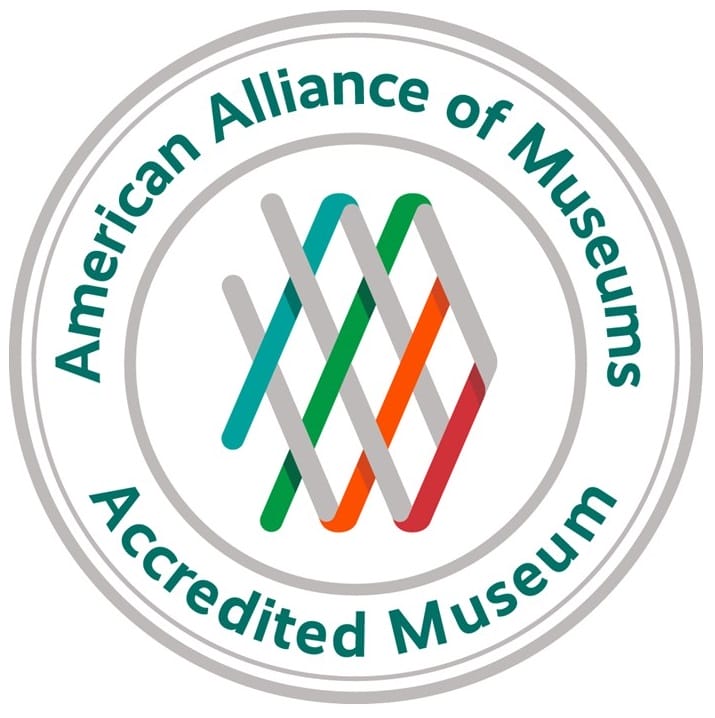CURATOR’S LOG: What Does Accreditation Mean, How Will It Benefit the Museum, and What Did the Museum Have to Do to be Accredited?
By Rita Serotkin

After more than three years of preparation and submitting its formal application, the Santa Barbara Maritime Museum (SBMM) was officially notified on July 15, 2021, that it had been accredited by the American Alliance of Museums (AAM). What is AAM anyway? And why would the staff and Board of Directors take on such a daunting task to begin with, especially when only about 1,100 museums out of more than 35,000 have done so?
What is the American Alliance of Museums?
As AAM describes itself on its website, “From art museums to science centers, arboretums to zoos, members of the diverse museum community share something in common—strong support, standards of excellence, knowledge sharing, and professional networks provided by the American Alliance of Museums. Since 1906 the Alliance has been a leader in developing best practices and advocating for museums, as well as providing a host of opportunities to museum staff and volunteers. More than 35,000 individual museum professionals and volunteers, institutions, and corporate partners benefit from the work of the Alliance.” In addition, the Alliance offers specific pathways and standards for guidance that can be used to help museums abide by best practices. Its Accreditation Program has been recognized as the gold standard of museum excellence. “With its mix of self-assessment, peer review, and public recognition, AAM Accreditation helps to ensure the integrity and accessibility of museum collections, reinforce the education and public service roles of museums and promote good governance practices and ethical behavior.”
Why would a museum seek AAM Accreditation?
As the museum field’s mark of distinction since 1971, accreditation offers high profile, peer-based validation of a museum’s operations and impact. It also increases a museum’s credibility and value to funders, policy makers, insurers, community and peers, which can translate into eligibility for more grant funding, inter-museum exhibit lending and partnerships, and respect within the community.
What is involved in becoming accredited, and what did SBMM have to do?
The accreditation process is centered on self-study and peer review, can take 8-16 months to complete, and must be renewed every 10 years. For SBMM, the decision to pursue accreditation was made three years ago by SBMM’s Exhibits and Education Committee. According to Curator Emily Falke, one of the decision’s earliest proponents, “The museum had to be ready. This meant financial stability, organized and properly-cared-for collections; building and collection safety and security, educational programs, exhibit support, and Board and staff commitment.”
Once the Board of Directors voted to further explore and pursue accreditation, the real work began.
Since much of AAM’s accreditation decision is based on how well a museum accomplishes its stated mission, vision, and goals, that is where SBMM needed to begin back in 2018. With its 20th anniversary coming in 2020, the Board of Directors and staff reviewed the museum’s statements of its mission, vision, and goals and rewrote the mission statement as necessary to fit the museum’s current realities, perception, and actual programs. Once that had been approved by the Board, work began on the remaining four required core documents: the institutional plan, a collections management policy, an institutional code of ethics, and an emergency response and disaster preparedness plan. All of these documents were then submitted to AAM to determine whether they were acceptable before beginning the formal process of accreditation. Imagine the staff’s surprise and pleasure when they were not only approved but told that SBMM’s documents and programs would serve as models for other museums who were looking into what they needed to do to be accredited!
Completing the next steps – gathering data, improving the collection site, digitizing all of the collection records, and writing the self-study – was a daunting task which led to a great deal of growth and self-evaluation. In order to write the self-study, which turned into a detailed 60-page report responding to AAM’s questions about the Museum’s organization, a committee of staff and Board members spent months putting together information about SBMM’s location and area demographics, the collection site, visitorship, financial sustainability, and educational programs…and then recording it all in a document. As the work progressed, it became increasingly apparent that there were so many things that required us to stop and evaluate, analyze our greatest strengths and weaknesses, and identify what we needed to do to remedy the problems that we found. In January 2020, the full application for accreditation was submitted to AAM for evaluation, and we awaited the next step, a site visit.
And then came the pandemic…
With the Museum closed, we continued the process begun with the self-study of looking at how we could still serve and educate the community, leading to our development of online programming and at-home hands-on activities. Our lectures became Zoom webinars and we experimented with online fundraisers, becoming more creative in developing new efforts in line with our mission as we waited for the next step – the AAM site visit, during which a committee of AAM-appointed museum professionals visits the Museum and looks at the reality of what we do compared to what we said in the self-study. In early March, peer advisors spent two days on virtual accreditation Zoom calls with staff, Board members, and stakeholders, and then we awaited the decision slated for June 2021.
And now you know the rest of the story!
